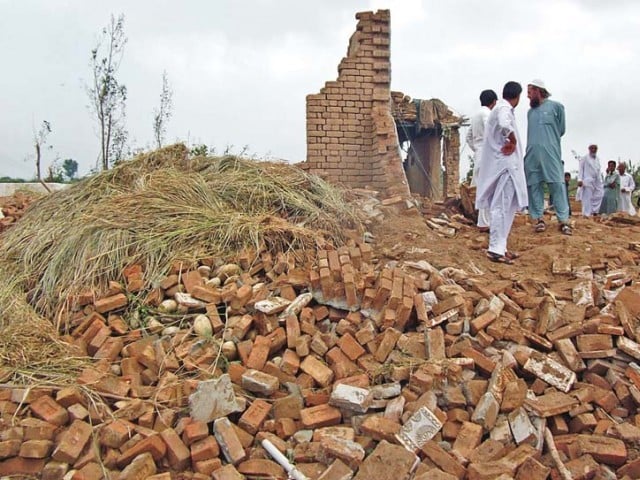
At least 11 districts in Malakand and Hazara divisions, which have faced devastation amid climactic shifts over the last decade, are in danger of falling prey to this phenomenon once again.
Experts believe if proper methods of risk reduction, mitigation and adaptation are not implemented, these natural hazards will turn into catastrophic disasters. These are the early estimates provided by the Climate Change Advisory Committee nominated by the government to formulate a policy.
Question hour: Govt yet to counter the ‘danger’ of climate change
In its initial assessment on the impact of climate change in Khyber-Pakhtunkhwa, the committee has shown the effects of changing weather patterns are felt in the province because it is situated in a mid-latitude region.
The Express Tribune spoke to three members of the committee who said there was a dearth of even the most basic awareness regarding climate change.
“We hope the government will take the recommendations seriously and help implement and formulate [a climate change] policy,” an expert on the panel said. “[Such a policy] is a basic need of the province.”
Rainfall patterns
As per the draft policy on climate change, monsoon rain is likely to increase and extend to the northern parts of the province due to warmer temperatures.
In addition, wet regions will receive more precipitation while dry regions will receive less precipitation than before.
Such heavy precipitation patterns will accelerate glacial melting. As a result, flash floods are expected in wet regions and less precipitation in dry regions will trigger droughts.
Climate change boosted 'once-a-century' floods: study
The main regions of K-P expected to face flood hazards are Buner, Shangla, Lower Dir, Upper Dir, Swat, Chitral, Haripur, Battagram, Mansehra, Abbottabad and Kohistan.
“It is highly likely these regions will experience intense rainfall,” a member of the panel said. “Galiyat, lower Kaghan Valley and southern parts of Kohistan will be especially affected.”
Food insecurity
Experts believe DI Khan will be particularly affected by drought. Although the drought will not lead to considerable destruction, it is likely to compromise on food security.
Agricultural land between Peshawar, Mardan, Charsadda, Nowshera, Swabi, Kohat, Hangu in the central valley plain and Bannu, Karak, Lakki Marwat, Tank, DI Khan in the southern districts constitute 1,115,000 hectares of cultivated area. With rising temperatures and decreasing rainfall, these areas are going to be water-stressed in the coming years.
According to experts, high temperatures are likely to impact crop cultivation. Although it will be easier to cultivate some crops, high temperatures will increase evapotranspiration and increase water requirements for most crops. Initial studies reveal the quantity and availability of groundwater and irrigation water will be vital in determining the extent of water stress in the area.
Advocacy and sensitisation
The draft policy is divided into nine chapters that explain the impact of climate change through a sectoral analysis. According to the draft policy, climate change and its impacts must be taught to students at schools.
“These are just initial estimates of the effects of the climate change,” Environmental Protection Agency (EPA) Climate Cell Deputy Director Afsar Khan told The Express Tribune. “The department was busy getting feedback from all stakeholders involved. The climate change policy has to go through a number of drafts.”
Published in The Express Tribune, February 28th, 2016.


1736541297-0/Untitled-design-(59)1736541297-0-165x106.webp)














COMMENTS
Comments are moderated and generally will be posted if they are on-topic and not abusive.
For more information, please see our Comments FAQ